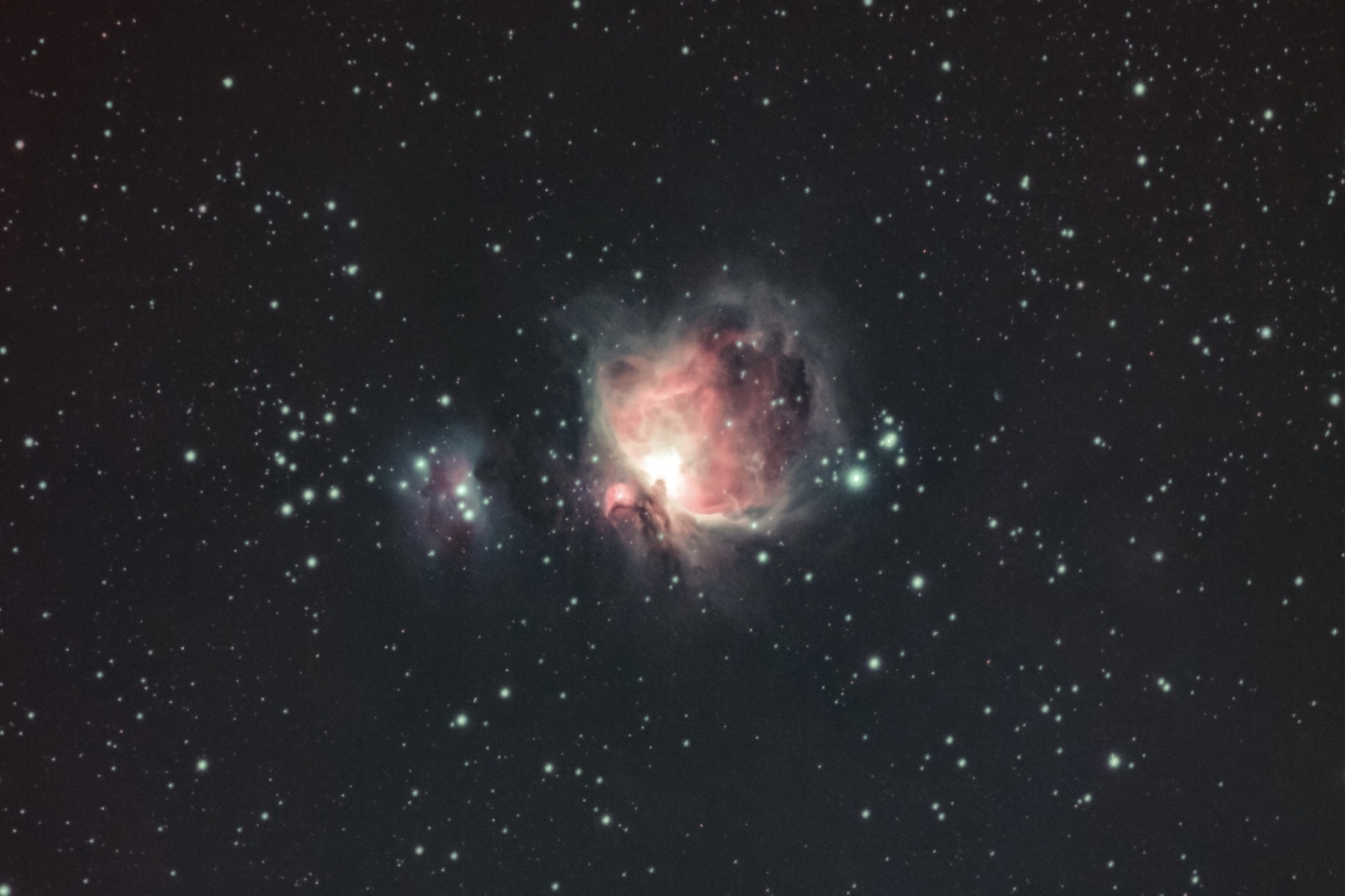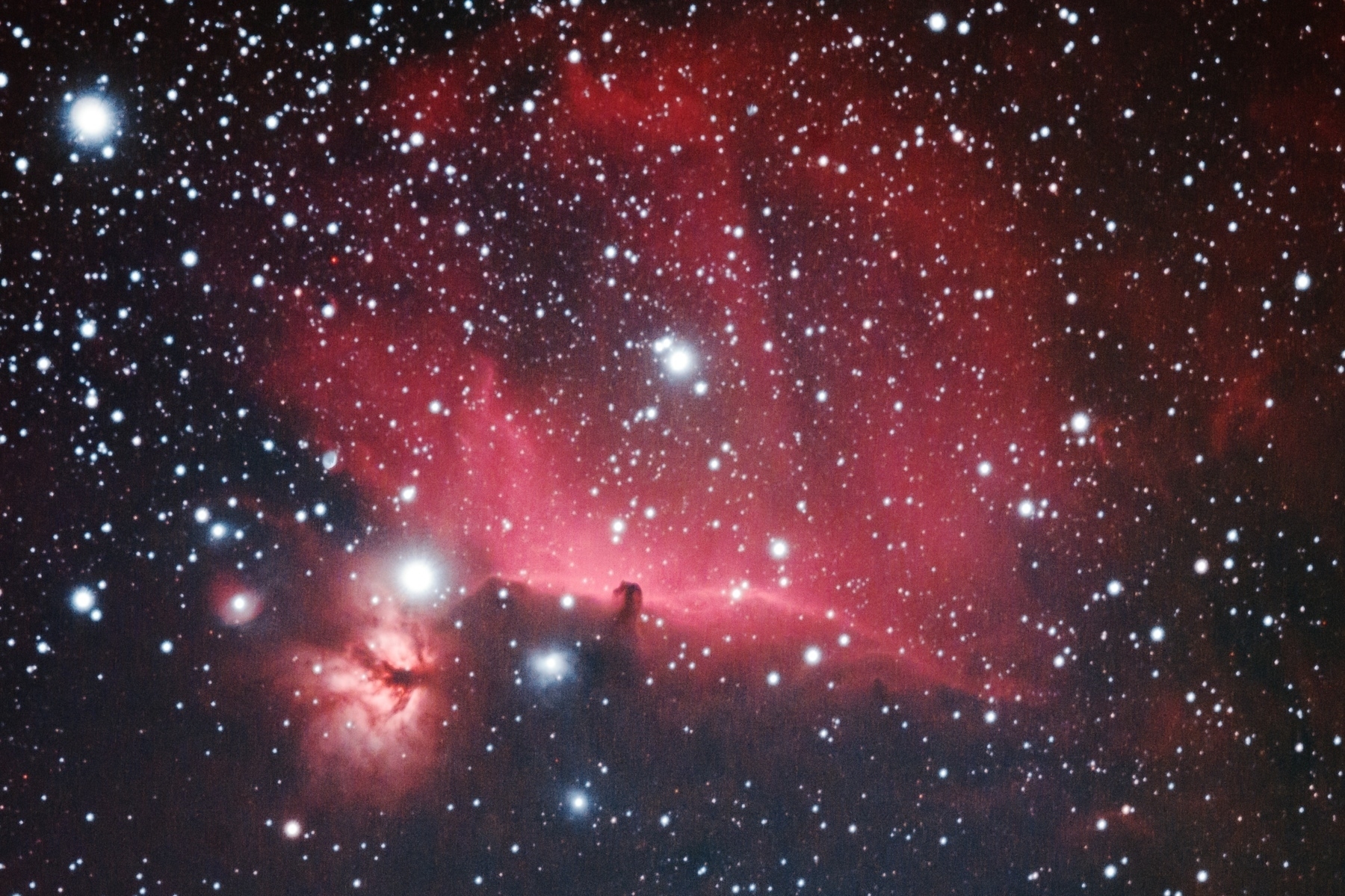nebula
Camera and image framing
Now with some experience with 2 different cameras on the same telescope, I can see how these different setups have different field of view and it can affect the framing of images. The cameras in this comparison are Nikon Z6, a full frame DSLR with 6048x2024 pixels and ZWO ASI533MC-PRO, a dedicated astrophotography camera with a cropped sensor with a resolution of 3008x3008 pixels. The same target was imaged using same telescope, William Optics ZenithStar 61, attached to these cameras and the difference in field of view is huge as seen here. They are processed differently at different times, hence the overall image quality should not be compared here, just the field of view.
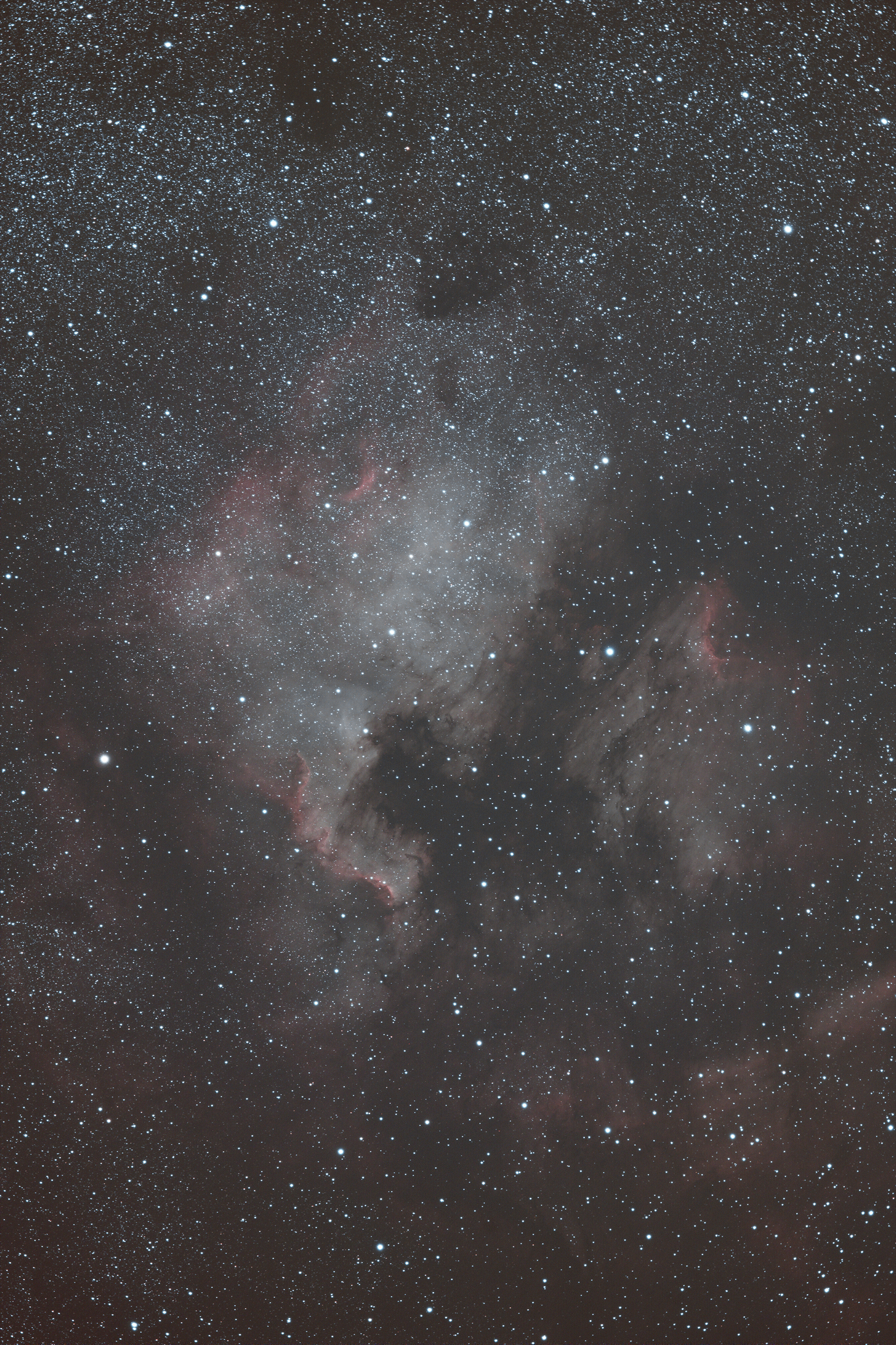

This difference in field of view for these cameras will be useful in deciding which camera to use for what target. I think for large targets like North American Nebula, the wide field with Nikon Z6 is desirable to cover it along with the neighboring Pelican nebula but, at the same time, the small field of view can be useful in getting more details in the more interesting part (Cygnus wall) of the North American nebula. It is good to have these choices. I can see making use of both these fields of view for imaging in coming months and years to come. Buying another camera or another telescope is always possible and it will bring in new calculations and new possibilities.
Rosette nebula again
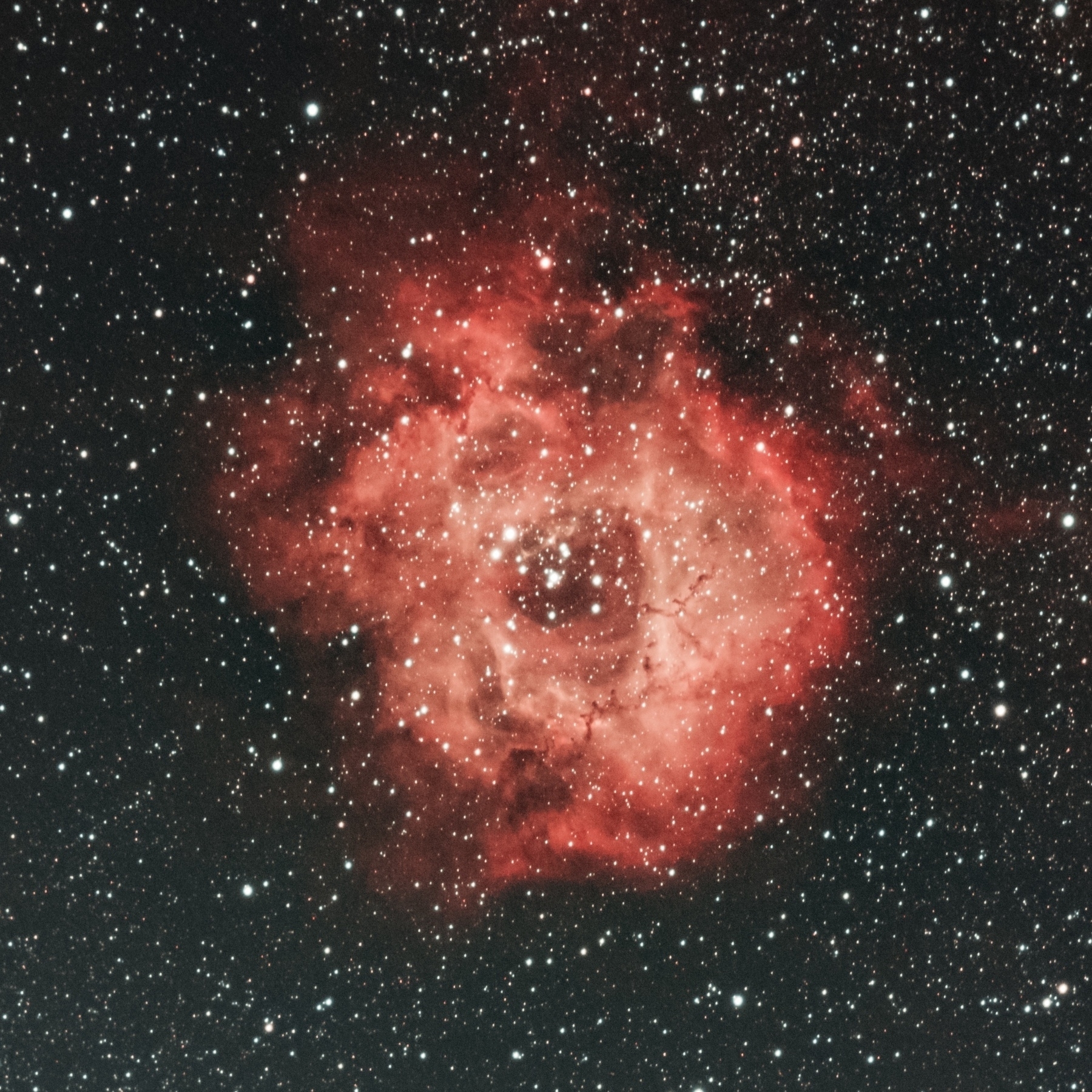
Another attempt at capturing Rosette nebula. This time I was able to get about 2 hrs of exposure instead of 20 mins for the first try a few days ago. There was also enough time to shoot calibration frames - darks, biases and flats. It is so easy to use these calibration frames in Siril. This allowed for better resolution making the strands and patches of dark nebulosity clearer. I still have to learn some star reduction techniques.
Rosette nebula
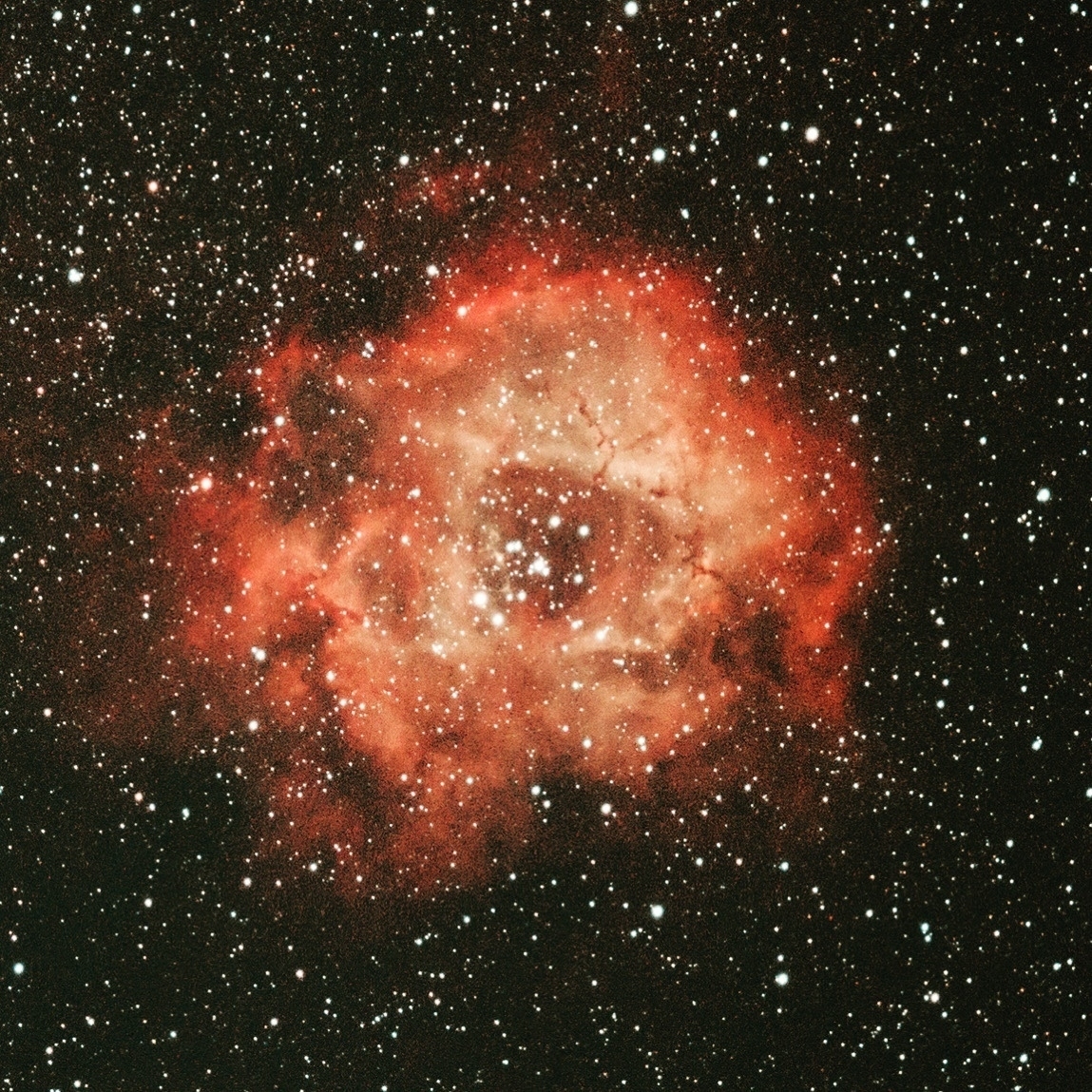
I so wanted to capture this for a long time. Last night I set up everything but clouds rolled in in about 20 minutes. That is why it is so noisy. Needs more time. Also, it was such a short exposure, I didn’t bother with calibration frames.
This nebula is about 5200 light years away and is huge. The central hole with that star cluster is about 30 light years across.
WO ZS61 - Nikon Z6 - LeNhance - 14 x 90 sec
Horsehead nebula
Orion is my most favorite constellation and my most favorite deep-sky object is the Horsehead nebula. It is a dark nebula with background of bright ionized hydrogen gas. With many bright stars especially Alnitak, in the vicinity, it is a challenging object to capture. It is even more beautiful in B&W. It is the same photo described in this post from last month.
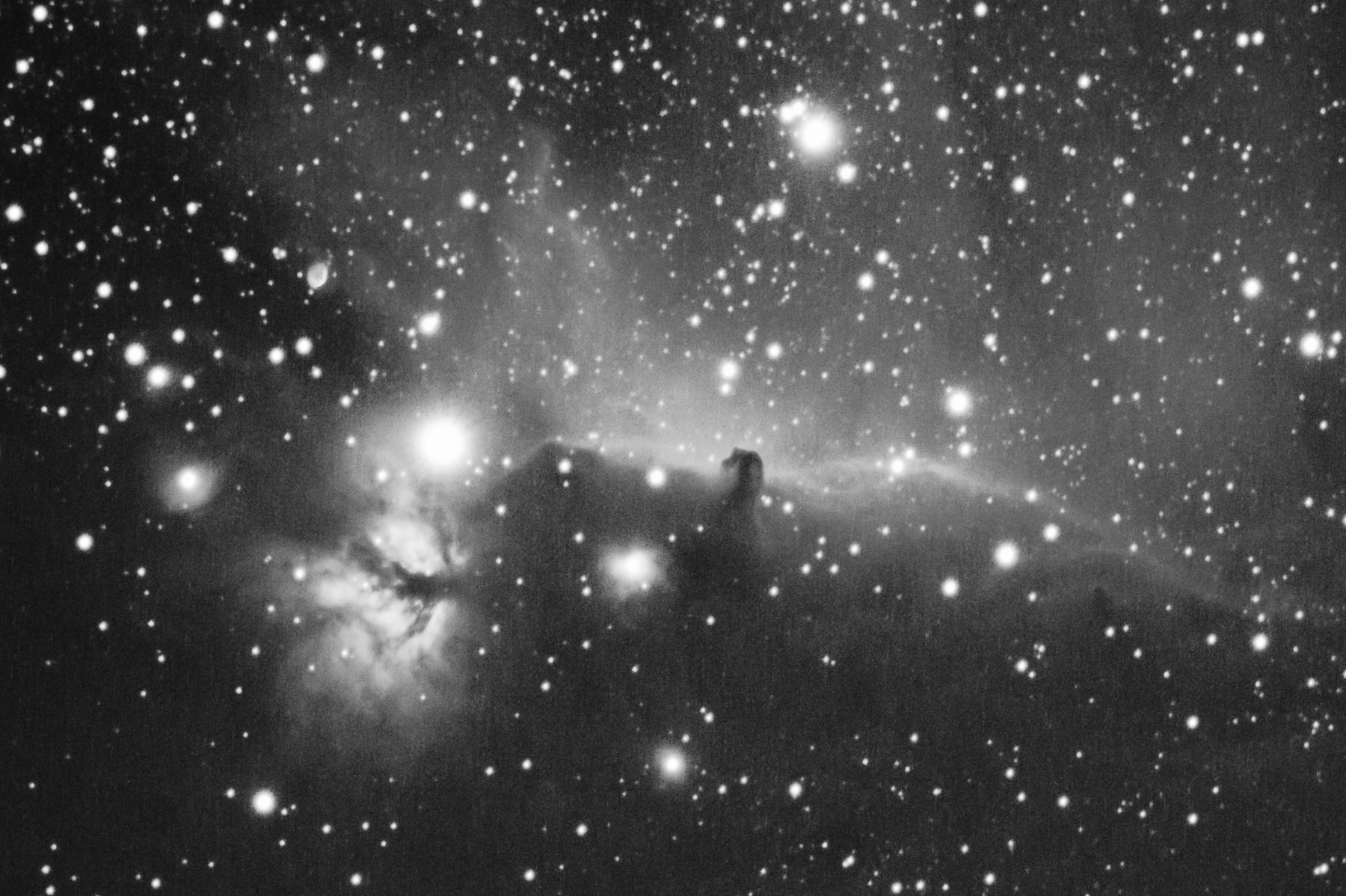
Nebulae in Orion
January has been a very cloudy and rainy/snowy month. On a couple of clear nights, there was a big bright moon making it hard to do any deep sky imaging. Finally, last week, we had a clear dark night. I was able to capture two different images in the Orion constellation.
Orion and Running man nebulae
The Orion Nebula (M42) is one of the brightest nebula that is visible to naked eye. It is about 1300 light years away and is a region of massive star formation closest to Earth. There are about 700 stars in various stages of formation within the nebula. (Text paraphrased from Wikipedia.) William Optics ZS61 with Optolong LeNhance narrowband filter
William Optics ZS61 with Optolong LeNhance narrowband filter
 Nikon-Z6 60 x 1min subs; processed with Siril and Photoshop
Nikon-Z6 60 x 1min subs; processed with Siril and Photoshop
Flame and Horse head nebulae
The Horse head nebula (Barnard 33) is about 1300 light years away and is one of the most recognizable dark sky object. As a young boy interested in Astronomy, I was very impressed by Horse head nebula. It is a faint object and I couldn't view with the amateur telescope that I had. At that time I couldn't have imagined that some day I'll be able to take a photo of Horse head nebula. William Optics ZS61 with Optolong LeNhance narrowband filter
William Optics ZS61 with Optolong LeNhance narrowband filter
 Nikon-Z6 41 x 3min subs; processed with Siril and Photoshop
Nikon-Z6 41 x 3min subs; processed with Siril and Photoshop
While capturing these light frames, other calibration frames (bias, dark, and flat) were also collected but, not used while processing to get the images posted here. Planning to reprocess with those calibration frames and see how much difference they make. I also have to learn techniques for star reduction. As can be seen in these images, the stars are getting bloated while stretching the data to bring out the faint objects.
